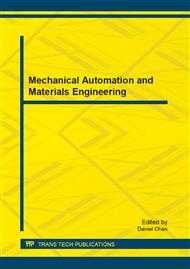[1]
M. Celina,J. Wise,D. K. Otteseqb,K. T. Gillen,R. L. Clough. Oxidation profiles of thermally aged nitrile rubber. Polymer Degradation and Stability. (1998)4 93 504.
DOI: 10.1016/s0141-3910(97)00113-4
Google Scholar
[2]
Bart J La Count, Jose M Castro, Frederick Ignatz – Hoover. Development of a service-simulating, accelerated aging test method for exterior tire rubber compounds II. Design and development of an accelerated outdoor aging simulator [J] . Polymer Degradation and Stability, 2002, 75 (2): 213 – 227.
DOI: 10.1016/s0141-3910(01)00220-8
Google Scholar
[3]
Robert Bernstein, Kenneth T. Gillen. Fluor silicone and Silicone O-ring Aging Study, SANDIA REPORT, (2007).
Google Scholar
[4]
T.R. Dargaville, M. Celina1, R.L. Clough. Evaluation of vinylidene fluoride polymers for use in space environments: Comparison of radiation sensitivities. Radiation Physics and Chemistry 75 (2006) 432–442.
DOI: 10.1016/j.radphyschem.2005.10.010
Google Scholar
[5]
Deng Huang, Bart J La Count, Jose M Castro, Frederick Ignatz-Hoover1Development of a service-simulating, accelerated aging test method for exterior tire rubber compounds [J]. Polymer Degradation and Stability, 2001(74): 353 – 362.
DOI: 10.1016/s0141-3910(01)00185-9
Google Scholar
[6]
R. Bernstein K.T. Gillen. Predicting the lifetime of fluorosilicone O-rings. Polymer Degradation and Stability,2009; 94: 2107-2113.
DOI: 10.1016/j.polymdegradstab.2009.10.005
Google Scholar
[7]
Li yongjin. Nitrile vulcanized rubber oven accelerated aging and indoor natural aging relevant research. Special rubber products. 200 l, 22(4) : 5 l—56.
Google Scholar
[8]
Zhang kai, Huang yuhong, Ma yan, Zhou dehui. Rubber material accelerated aging test its life prediction method. Chemical Propellants & Polymeric Materials. 2004, 2(6).
Google Scholar
[9]
J. Wise, K.T. Gillen and R.L. Clough. Quantitative model for the time development of diffusion-limited oxidation profiles. Polymer Vol. 38 No. 8, pp.1929-1944, (1997).
DOI: 10.1016/s0032-3861(96)00716-1
Google Scholar
[10]
Samul K. Clark. Mechanics of Pneumatic Ties. U.S. Department of Transportation National Highwa Traffic Safety Administration Washington, D.C. 20590.
Google Scholar
[11]
Pacejka, H. B., Tire and Vehicle Dynamics, 2rd ed, (2005).
Google Scholar
[12]
J.Y. Wong Theory of ground vehicles. 3rd ed. (2001).
Google Scholar


